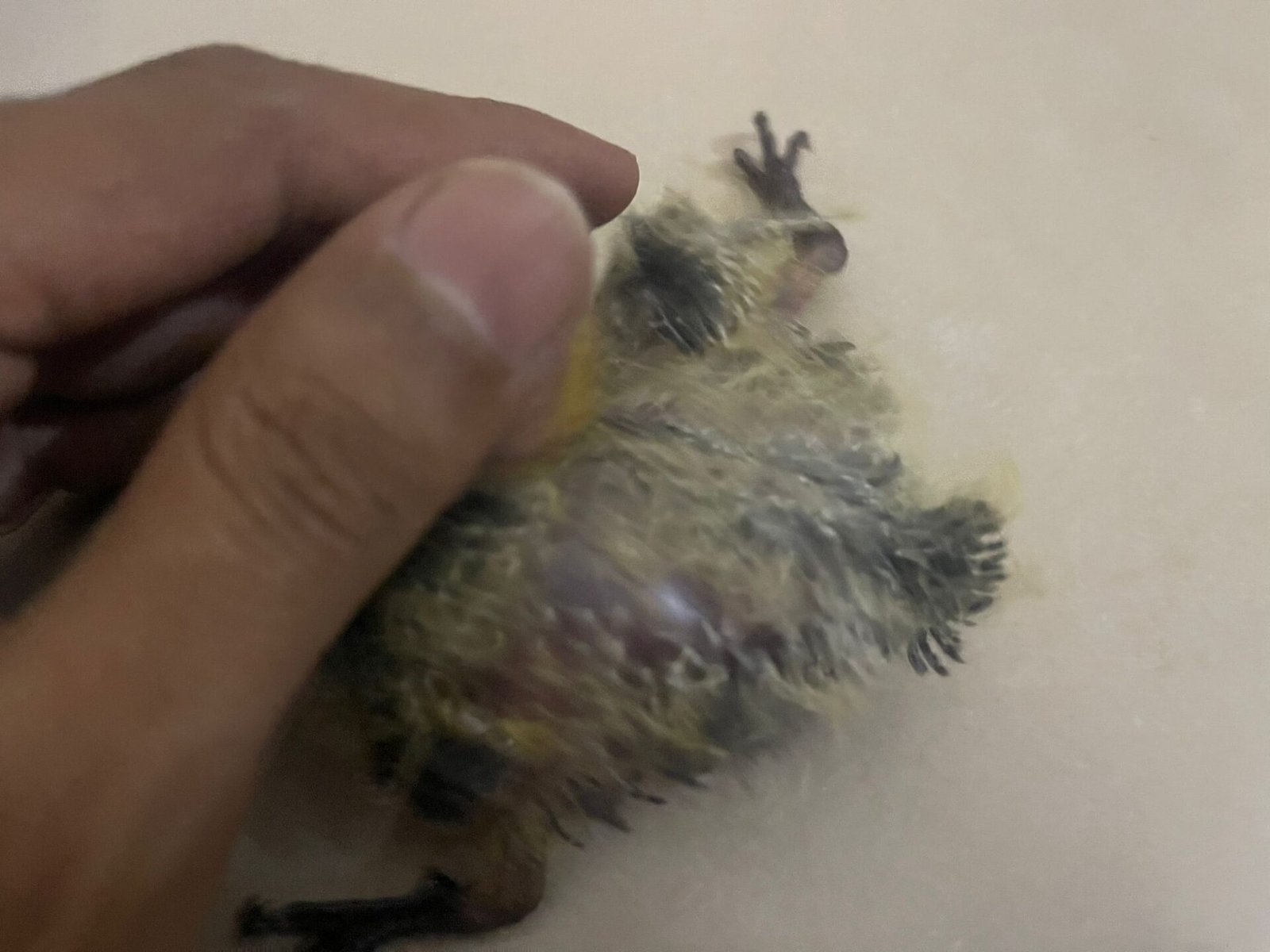Potential Ruptured Airsac in Young Birds
Problem:
You’ve identified a large, air-filled bubble under the skin of an older dove’s right side, near the wing. This is likely a ruptured airsac, a condition where a tear in the bird’s respiratory system allows air to accumulate under the skin.
The dove’s history of falling from a high nest and experiencing multiple impacts suggests trauma as the potential cause. Ruptured airsacs can also be caused by infections, but the trauma scenario seems more likely in this case.
Solution:
Attempting to treat a ruptured airsac at home is strongly discouraged.
- Puncturing the airsac with a pin is a risky procedure. Improper technique could cause further injury, infection, or even death.
- Avian veterinary professionals have the training and experience to safely deflate the airsac and potentially repair the tear.
Here’s what you should do:
- Locate a qualified avian veterinarian immediately. Explain the situation and the dove’s history in detail. Early intervention is crucial for a successful outcome.
- Keep the dove warm, quiet, and stress-free while you wait for veterinary care. Provide a small, covered box with soft bedding and maintain a room temperature around 75°F (24°C).
- Offer small amounts of water with a dropper or shallow dish. Avoid force-feeding.
- Do not attempt to administer any medications or treatments unless specifically instructed by a veterinarian.
Important Considerations:
- The younger dove’s lethargy and lack of eye-opening could indicate additional injuries or illness. A veterinarian can assess its condition and provide appropriate care.
- Releasing these doves back into the wild without proper veterinary evaluation and treatment is not recommended. Their injuries might significantly impact their ability to survive.
By prioritizing professional veterinary help, you’ll significantly increase the chances of a positive outcome for both doves.
Fluid-Filled Bubble on Bird’s Head: Urgent Veterinary Attention Required
Problem:
You’ve noticed a concerning bubble on a young bird’s head, approximately the size of a large pecan. While the bird may appear comfortable and continue eating, this swelling – likely a fluid-filled sac – demands immediate veterinary attention.
Solution:
Self-treatment, including pricking the bubble, is strictly discouraged. Here’s a breakdown of the risks involved:
- Infection: Using non-sterile instruments poses a serious threat of introducing infection, potentially causing further harm.
- Underlying Cause: The bubble could be a symptom of a more significant internal injury that requires veterinary diagnosis and treatment.
- Delicate Procedure: Deflating the sac safely requires aseptic technique and proper aftercare, best managed by an avian veterinarian.
Seek Professional Veterinary Help Immediately:
An avian vet has the expertise and resources to effectively address the situation:
- Safe Deflation: They can employ sterile techniques to drain the fluid and potentially insert a drainage tube to facilitate sac healing.
- Underlying Condition Diagnosis: A thorough examination will help identify any internal injuries that might have caused the bubble.
- Antibiotic Prescription: If necessary, antibiotics may be prescribed to prevent or combat potential infections.
Prompt veterinary intervention is critical for the bird’s health. Consulting an avian veterinarian as soon as possible offers the best chance of a full recovery.
Potential Air Sac Injury in Fledgling Turtle Dove
Problem:
You found a fledgling turtle dove with a swollen lump or sac under its left wing. The lump is a few centimeters long and appears filled with air or clear liquid. You’re concerned it might be an internal injury or a reaction to a scratch from a cat encounter. The bird seems otherwise healthy and is following its parents around.
Solution:
The most likely cause is a ruptured air sac. Birds have a complex respiratory system that includes air sacs. A damaged air sac can leak air, causing a swelling under the skin. While concerning, it’s not necessarily life-threatening.
Here’s what you can do:
- Monitor the lump: Observe if the lump is growing larger. A rapidly inflating sac requires professional attention.
- Consider deflation (if necessary): If the lump is large and causing discomfort, you can deflate it using a sterile needle. Important: This procedure is delicate and ideally performed by a veterinarian. Improper technique can worsen the injury.
Important Note:
- Veterinary consultation is crucial: While some advise home deflation, consulting a veterinarian experienced with wild birds is critical. They can accurately diagnose the cause, ensure proper deflation technique, and provide antibiotics if needed to prevent infection.
Additional Recommendations:
- Minimize handling: Avoid stressing the bird by handling it excessively.
- Provide proper care: Continue offering the dove a safe environment, water, and seeds.
By closely monitoring the bird and seeking professional help if necessary, you can increase its chances of recovery.
Final Thoughts
In conclusion, if you find a young bird with a suspicious air-filled bubble or fluid-filled sac, consulting an avian veterinarian immediately is critical. Self-treatment attempts are risky and could worsen the bird’s condition. Early intervention from a qualified professional offers the best chance of a full recovery for the bird.
Recent Posts
Understanding Swollen Legs in Chickens: A Guide to Diagnosis and Treatment Leg swelling in chickens can be a cause for concern. This condition, often accompanied by limping or discomfort, can stem...
Aggressive Chick in First Flock? Help Taming a Possible Roo!
Congratulations on your new chicks! While it's exciting to welcome new feathered friends to your home, you seem to be encountering a potential challenge with one particular chick exhibiting...

